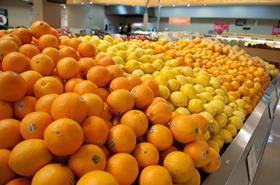
The 2012 seasons is looking like the last time Australian citrus will hit the US through the DNE World Citrus Sales single point of entry arrangement.
A draft review of Australia’s export efficiency powers (EEP) by the country’s Department of Agriculture, Fisheries and Forestry (DAFF), which was released earlier this month, has unambiguously recommended the EEP be dismantled. The EEP is the regulatory basis for Australia’s single desk import system through DNE in the US, and its removal would mean the deregulation of imports into the market.
The draft review has yet to be finalised before going to a ministerial decision, and the industry itself is divided about whether it wants to keep the single-desk arrangement, but many in the industry are acting on the assumption the system will be dismantled before next season.
“We are going to be doing some more consultation in the industry in order to put in a submission to the draft report, and then the government must respond to those submission,” Judith Damiani of peak industry body Citrus Australia explained to Asiafruit.
“Knowing my industry, there’s plenty of room for discussion. There are lots of people who want to keep those arrangements, and a lot who want to get rid of them.”
While it appears clear the single-desk arrangement is losing support, Damiani said there may be scope to keep the EEP in place to some extent to allow mandatory quality controls of fruit being exported to the US market.
“Without the regulations everything becomes voluntary,” she stated. “That’s where we want to have more discussions with the industry in case we can keep those regulations in place to use in different ways, such as on quality standards. It’s really up to our industry whether they’d support that.
“We’ve looked at what some of our competitors do, for example South Africa has export regulations and they impose minimum quality criterea for export fruit. So we might want to keep the ability to do that kind of thing. We don’t want to make a call `on the DAFF report` without discussing those sorts of issues.”
Australia’s mid-sized and larger exporters are generally in favour of deregulation, feeling there are market windows the current system has not allowed them to take advantage of. Smaller growers and marketers are worried a lack of control will pit Australian citrus suppliers against each other in a market that is in little need of further competition.
“It would probably harm the market in the sense that there would be no more volume controls or price controls in the market,” Robert Pandolfo of Griffith packer Mario’s Pack House told the ABC.
“It would be open slather. We would probably be at the mercy of the giant retailers over there.”
Current season improvement
This season, however, the US market is looking slightly more positive than in 2011. The larger size profile of this year’s Australian orange crop is better suited to demand, but the overhang of US citrus has of course had an effect in the market there as well.
“There’s a bit too much local fruit, but DNE are optimistic with good interest coming from supermarkets,” Ferdi Bergamin of grower-exporter the Mildura Fruit Company (MFC) told Asiafruit. DNE has predicted a 50 per cent increase in orange landings this season, hitting around 750,000 cartons of navels.
While better than last year, 2011 was a particularly poor season for Australian navel exports to the US, noted Neil Barker of exporter BGP International. “You have to compare it to a peak of 1.8m cartons four years ago; 500,000 cartons last year was an aberration,” he said. “If we make only make 750,000 cartons it will be a disappointing season.”
A full report in the Australian citrus season will appear in the July/August edition of Asiafruit Magazine.



